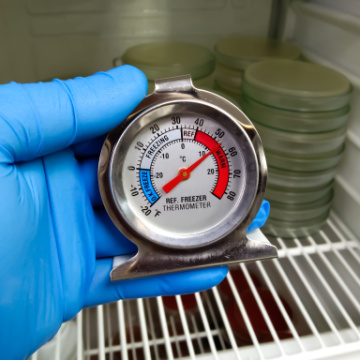Reducing Supply Chain Food Loss with Real Time Temperature Monitoring
It has been estimated that approximately one-third of all food produced around the world is wasted. This is a terrible statistic from the perspective of global food shortages. Wastage of food also has its environmental impact. Methane, a greenhouse gas, is produced in landfills by rotting food.
Industry experts suggest that around 40% of food waste can be attributed to the supply chain, primarily because of a lack of control and visibility over products throughout the supply chain. This is why many food producers and processors are now investing heavily on supply chain monitoring solutions such as real time temperature monitoring and other similar systems.
Supply Chain Breakdowns and Food Wastage
Most of the supply chain disruptions are short-lived and regional, such as those caused by winter storms, cyclones and other natural disasters. The supply chains for food supply were pushed to their breaking points during the Covid-19 pandemic. Shortages were experienced at the retail level because of frequent logistics failures resulting from shutdowns. One of the most effective ways to minimise such disruptions is the use of end-to-end supply chain technology. This allows the producers and as well as logistics providers to find out the exact location of the goods and determine optimal routes.
Temperature Excursion and Food Loss
As mentioned earlier, 40% of food loss takes place in the supply chain and well before it reaches the end users. While some of it may be the result of inadequately staffed production sites, a significant proportion of this loss is caused by inappropriate storage and transportation. Foods such as fruits, vegetables, meats, and dairy are prone to degrading quickly, and must be maintained at constant temperatures to retain freshness. It is true that real time monitoring doesn’t change the procedures for food harvesting or processing. However, they can certainly ensure that optimal temperatures are maintained while the products are transported and stored.
Food Loss Caused by Replacement and Rejected Shipments
Operational and product waste due to the lack of total supply chain visibility is another serious consideration. Temperature deviations occurring during transportation often remain undiscovered until the food is inspected and rejected by quality assurance teams. Wasted shipments such as these mean stock outages and sending a replacement shipment.
Solving Logistics Issues with Temperature Monitoring Systems
Temperature monitoring systems allow users to easily track, control, and regulate the temperature of different products in a specific environment. Their function is to ensure that temperature-dependent products remain fresh when they are transported.
Some of the key features of these systems include
- Automatic alerts are sent informing users about high and low temperatures.
- Users are alerted about even the slightest of temperature changes so that they can initiate corrective measures.
- Automated reports are generated to help users analyse trends and take measures accordingly.
- Tracking of temperature fluctuations and maintaining updated temperature readings.
- Depending on the type of container and product, users can customise indicators for maximum and minimum thresholds.
At ShockWatch, we offer the market’s most sophisticated range of temperature monitoring devices, temperature recorders, as well as temperature indicators. Please contact us today to bring an end to all logistics issues related to your food business.


